Joy Neal Kidney's Blog, page 52
June 11, 2022
Andrew’s View of the Week, Guest Blogger Andrew Reynolds
I had two scheduled medical appointments this week, one with my doctor and one with the dentist. I now know so much medical stuff that I can share the following with you:
Health is slowest rate at which you can die.
Nurses walk quietly near the medicine cabinets so they don’t wake the sleeping pills.
My doctor said the worst time to have a heart attack is while playing a game of charades.
I told the doctor that I was losing my sense of humor. She said it sounded like a case of irony deficiency.
I found this website the other day: conjunctivitis.med — it’s a site for sore eyes.
I told the dentist that I started to suffer from memory loss. He made me pay in advance.
Can an apple a day keep the doctor away? Well, yes, if you have good aim.
I took a banana to the doctor because it wasn’t peeling well.
I called the doctor to tell her I had a sick lemon. She said to give it lemon-aid.
Roverdose: a condition from owning too many dogs.
I had to call the paramedics the other day. I told them that I’d broken my leg in two places. They said to stop going to those places.
My doctor gave me a new kind of cough medicine – I have no idea what to expectorate.
Advice: never tell a lie to an x-ray technician – they can see right through you.
I tried writing a joke about amnesia, but forgot how it goes.
I featured Andrew’s book of poems about going through prostate cancer during National Poetry Month.
June 6, 2022
Battle of Midway: Memories of Donald Wilson
Ordinarily a six-month repair job after the damage in the Coral Sea battle in May 1942, the USS Yorktown (CV-5) was in dry dock at Pearl Harbor only three days, being patched and welded around the clock. The Navy had decoded a Japanese plan to attack Midway Island. Two dozen enemy ships were headed to Midway.
The Yorktown, its hull patched by huge steel plates, rushed back to sea with welders still at work. Iowan’s Donald Wilson was an Electrician’s Mate First Class on the carrier.
Two U.S. naval task forces, including the carriers Enterprise, Hornet, and Yorktown, and their screens of support ships, rendezvoused northeast of Midway Island. Scouter planes spotted four Japanese carriers. About noon on June 4, the Yorktown‘s planes were engaged in a dogfight with enemy planes. They also managed to bomb a Japanese carrier, which later sank.
The ships’ guns filled the sky with black smoke, but several Japanese dive bombers slipped through Combat Air Patrol and attacked the carrier. Several bombs smashed into the ship and exploded below decks, crippling the boilers and starting fires.
About three hours later, while repairs were being made, two more blasts slammed into the carrier. Torpedoes.
The port side rose, then fell to a list of twenty-seven degrees. Sailors were ordered topside for life jackets. Don Wilson and all those below dashed up ladders with battle lanterns. Soon the blue and white “abandon ship” signal was hoisted. Don scrambled over the lifeline on the fantail. He treaded oily water for an hour. Air raid alerts scattered the nearby ships three times during the rescue. Don was one of over 2000 exhausted survivors eventually pulled out of the Pacific.
The Japanese retreated, having lost all four carriers–four of the six that had been part of the attack on Pearl Harbor.
On every turn between zero and 17 knots
Donald Wilson, who has served on the CV-5 since its commissioning in 1937, later wrote, “At Midway the ride was very smooth compared to Coral Sea, as our speed was much slower. And, of course, being tuned to the screws, a slow-down or stop comes in loud and clear. And stop we did. In fact, we were on every turn between zero and 17 knots during our lull in the Midway engagement.
“The sad sight of seeing her roll over and sink after our salvage attempt will be with me forever. I am one of the few that abandoned her twice; in fact, my last step on CV-5 was off the fantail where I abandoned ship both times.”
More details.
Salvage attempt
The Battle of Midway took place from June 4-7, 1942. When the crippled Yorktown didn’t sink right away, Donald Wilson was on the volunteer crew to attempt to salvage it. He later received a Citation and Naval Commendation Medal for that service:
United States Pacific Fleet
Flagship of the Commander-in-Chief
The Commander in Chief, United States Pacific Fleet, takes pleasure in commending
Donald W. Wilson, Electrician’s Mate First Class
U.S. Navy
For service set forth in the following
CITATION:
For heroic conduct and meritorious service in the line of his profession as a member of the volunteer salvage crew which attempted on June 6, 1942, to salvage and return the U.S.S. Yorktown to port. Knowing full well that the Yorktown was in a precarious condition of damage received in battle on June 5 [sic], 1942, that she was barely seaworthy, and that she would probably be the target of repeated submarine and air attack against which it would be difficult to defend her, he requested that he be allowed to return to the ship and assist in her salvage. The efforts of the salvage party were so successful that all remaining fires were out, and two degrees of list had been removed when, in mid-afternoon, the ship was struck by two torpedoes fired from an enemy submarine. His conduct was in accordance with the best traditions of the naval services.
C.W. Nimitz
Admiral, U.S. Navy
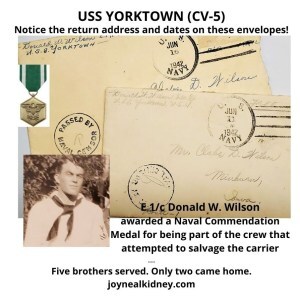
Donald still used the U.S.S. Yorktown as his return address on his next two letters home. News reports told about the battle, but the loss of the carrier wasn’t revealed for several months. He finally let his folks know that he’d been assigned to one of the battleships that had been sunk during the attack on Pearl Harbor, which made them more puzzled.
More about Donald Wilson.
All five Wilson brothers are featured on the Dallas County Freedom Rock at Minburn, Iowa.
Their WWII years are remembered in Leora’s Letters: The Story of Love and Loss for an Iowa Family During WWII.
June 3, 2022
Dead in the Water: The USS Yorktown at Midway by Stanford E. Linzey, Jr.
The Battle for Midway was fought 80 years ago this year. Paul Linzey’s father, who served aboard the USS Yorktown (CV-5), survived the sinking of the aircraft carrier and wrote his memoirs.
Dead in the Water
 Stanford Linzey joined the Navy so he could play in the US Navy Band. In 1939, he was assigned to the USS Yorktown (CV-5), serving through the Battle of the Coral Sea and at Midway, where the ship was sunk by the Japanese in June of 1942. During this time he also led Bible studies for navymen.
Stanford Linzey joined the Navy so he could play in the US Navy Band. In 1939, he was assigned to the USS Yorktown (CV-5), serving through the Battle of the Coral Sea and at Midway, where the ship was sunk by the Japanese in June of 1942. During this time he also led Bible studies for navymen.
My uncle, Donald W. Wilson, served on the CV-5 “her whole life,” so I had plenty of details about those battles, but Linzey’s descriptions were so compelling–of playing for each morning’s flag-raising, for the “Last T-Bone Steak in Captivity,” and about how repair parties were conducted. He also writes about escaping from deep in the ship when “Abandon Ship” was called.
The book is also an account of Stanford Linzey’s call to ministry, answers to prayer, and his call to return to the Navy as a Chaplain. He served 8 years as a musician in the Navy, returning as a Chaplain for 20 years. An amazing coincidence was that, after experiencing combat during the Battle of the Coral Sea, Dr. Linzey became Command Chaplain on the USS Coral Sea (CVA-43), another aircraft carrier.
Dead in the Water is inspirational as well as historically important. This is a reprint of a book originally published with the title, God Was at Midway. It has a new introduction by S. Eugene Linzey III and a new afterword by Paul E. Linzey, a retired Army Chaplain, who are sons of the author.
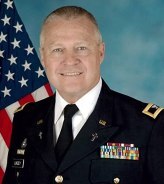 Paul Linzey also wrote Safest Place in Iraq, stories of men and women who experienced God during the war in Iraq, demonstrating that it is possible to remain true to one’s values and calling as a person of faith in a hostile world.
Paul Linzey also wrote Safest Place in Iraq, stories of men and women who experienced God during the war in Iraq, demonstrating that it is possible to remain true to one’s values and calling as a person of faith in a hostile world.
This is a fascinating memoir of one Army chaplain’s experiences during war-time, ministering to his own troops and even those of allied groups from other countries. He is also honest about lingering consequences of living under stress and terror.
One light-hearted chapter is about an “international, interdenominational slugfest” called “Ping Pong with the Priest.”
The compelling book includes an Epilogue, Questions and Topics for Discussion, and a Glossary.
June 1, 2022
Farm Kids and Chores, 100 Years Ago
Farm kids certainly learned to do hard work in earlier decades, and to contribute to the family when they were young. Here are Donald and Delbert riding a machine pulled by a team of horses. You can be sure that their dad, Clabe Wilson, rigged up the horses for them.
He would have been a patient teacher about turning the horses at the end of a row and watching the field to make sure the weeder didn’t tear out any of the precious corn plants.
Check the photos for the boys’ doing fieldwork barefoot!
 Donald Wilson, not yet 9 years old, running the weeder over the cornfield. SE of Dexter, Iowa, June 5, 1925
Donald Wilson, not yet 9 years old, running the weeder over the cornfield. SE of Dexter, Iowa, June 5, 1925 Delbert Wilson, just turned 10, also weeding corn. SE of Dexter, June 5, 1925
Delbert Wilson, just turned 10, also weeding corn. SE of Dexter, June 5, 1925 Taken on Delbert’s 10th birthday, June 3, 1925
Taken on Delbert’s 10th birthday, June 3, 1925But I’ll bet that Clabe Wilson kept an eye on his sons as they weeded the corn, then helped them unhitch the horses and taught them how to tend to the hot and sweaty horses.
I’m going through Leora Wilson’s memoirs, which she wrote decades later. She told about chores when she was a child. Like Delbert, she was the oldest of several children.
Her brothers Merl and Wayne plowed corn when they were 6 and 7, even younger than Delbert and Donald. Wayne drove the team while Merl handled the plow to cultivate corn, she said. “We were all taught to work early in life–a good thing, and we took pride in it.”
Can you imagine kids these days doing much more than mowing the lawn and caring for a pet?
May 30, 2022
Dallas County Freedom Rock Selfies
Memorial Day is when we Americans remember our combat casualties. If you don’t know someone who lost his/her life defending freedom, you might visit one of Iowa’s 99 Freedom Rocks. The one close to my heart is the Dallas County Freedom Rock at Minburn, which honors all five of my mother’s brothers.
Here are a few photos that people have sent with the Wilson brothers: Donald, Delbert, Dale, Daniel, and Junior. They with their sisters, Doris and Darlene, grew up in Dexter during the Great Depression. Four of the brothers were tenant farmers with their parents, Clabe and Leora Wilson, at Minburn during WWII.
 Clayton Wilson from California was the first in the family to see “our Freedom Rock.” His great grandfather was Delbert G. Wilson, the oldest brother who is second from the left on the Rock.
Clayton Wilson from California was the first in the family to see “our Freedom Rock.” His great grandfather was Delbert G. Wilson, the oldest brother who is second from the left on the Rock.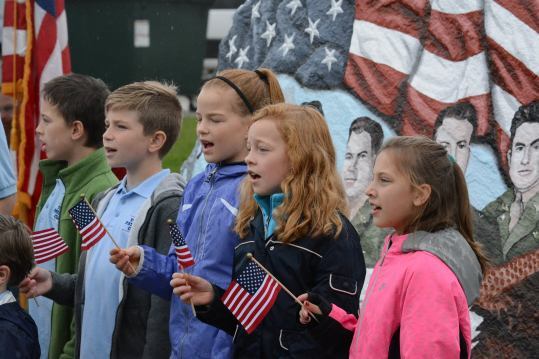 Some of the Young Patriots Club who sang at the dedication of the Dallas County Freedom Rock
Some of the Young Patriots Club who sang at the dedication of the Dallas County Freedom Rock I’m with Emina Nisic Hastings at the dedication at the Dallas County Freedom Rock at Minburn. She took photos for me that day and my author photo on “Leora’s Letters” and “Leora’s Dexter Stories” is one she took.
I’m with Emina Nisic Hastings at the dedication at the Dallas County Freedom Rock at Minburn. She took photos for me that day and my author photo on “Leora’s Letters” and “Leora’s Dexter Stories” is one she took.

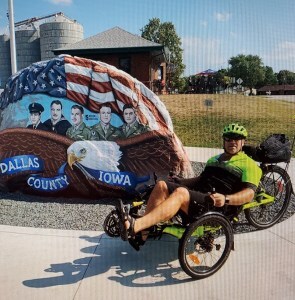
The photo on the left popped up on Instagram in July 2020 by c6_crazy. I sent him a little history of the brothers, and he showed up a couple of weeks later on his “other Corvette.”
My high school classmate, Steve Radakovich, sent a photo of himself with the rock.
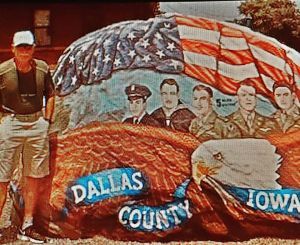 Steve Radakovich at the Dallas County Freedom Rock
Steve Radakovich at the Dallas County Freedom Rock

Val Plagge is the blogger at Corn, Beans, Pigs, and Kids. After reading “Leora’s Letters,” she told her kids the story of the Wilson family and they visited the Freedom Rock at Minburn. Her oldest daughter took the photo.
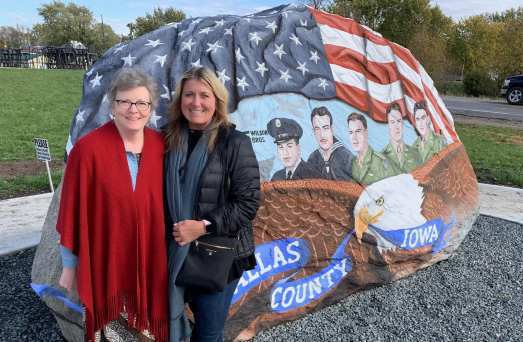 Jorja Jensen Dogic is with me, the day the Dallas County Freedom Rock was dedicated. She’s been an encourager from early in my writing about the Wilson family, and was a beta reader of the first two books.
Jorja Jensen Dogic is with me, the day the Dallas County Freedom Rock was dedicated. She’s been an encourager from early in my writing about the Wilson family, and was a beta reader of the first two books. This is Jorja’s dad, Rodney Jensen, who is from northern Iowa. He read both Leora books earlier this year, then drove down to Minburn to see the brothers on the Freedom Rock.
This is Jorja’s dad, Rodney Jensen, who is from northern Iowa. He read both Leora books earlier this year, then drove down to Minburn to see the brothers on the Freedom Rock.Leora’s Letters: The Story of Love and Loss for an Iowa Family During World War II
May 27, 2022
Memorial Day, to Remember Our War Casualties
Memorial Day is set aside for Americans to remember our war casualties.
Not our veterans. Not our ancestors. Our war casualties.
That means more to families directly affected, but each Memorial Day there are ceremonies to remember in cemeteries across the county. In fact, people in Europe and in the Philippines and around the world remember our war dead with solemn observances in our overseas American cemeteries. They still revere those Americans who lost their lives to help free their nations from tyranny.
Our family always took homegrown flowers to Perry’s Violet Hill Cemetery, to honor the three Wilson brothers who lost their lives during WWII. Only Junior, the youngest son of Clabe and Leora Wilson, is buried there. A cenotaph commemorates Daniel Wilson, who is buried in the Lorraine American cemetery in France, and Dale Wilson. Only God knows where his remains lie today.
 Leora Wilson arranging home-grown flowers, Violet Hill Cemetery, Perry, 1969
Leora Wilson arranging home-grown flowers, Violet Hill Cemetery, Perry, 1969With all five sons gone, Clabe and Leora Wilson moved to an acreage near Perry in late 1944, when they could no longer handle the tenant farm at Minburn. Clabe buried not long after the war, having died of a stroke and a broken heart. And since 1987, the boys’ mother Leora Wilson has been buried there.
Be sure to take time to remember those who gave their lives for our nation, even for our world.
Or you could take your family to visit one or several Freedom Rocks around the state. All five Wilson brothers are pictured on the Dallas County Freedom Rock at Minburn. Only two of them came home.
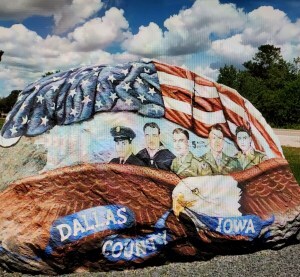 Donald, Delbert, Dale, Daniel, and Junior Wilson on the Dallas County Freedom Rock, Minburn, Iowa
Donald, Delbert, Dale, Daniel, and Junior Wilson on the Dallas County Freedom Rock, Minburn, IowaRemember that Memorial Day is reserved for those who lost their lives in service to our nation.
Leora’s Letters: The Story of Love and Loss for an Iowa Family During World War II is the story of the Wilson family.
May 23, 2022
Bridal Shower Dessert, 1966
This lemon dessert was served at my 1966 bridal shower with Guy’s family and friends from Glidden, Iowa. I made it for decades with different flavors–butterscotch, chocolate, pistachio (a pretty green), besides our favorite lemon.
Guy's Aunt Vesta's Lemon Nut Dessert1st layer: 1 cup flour
1/2 cup melted butter
1/2 cup pecan chips
2nd layer: 1 cup powdered sugar
2 cups Cool Whip
1 8-ounce pkg. cream cheese
3rd layer: 1 16-ounce box lemon instant pudding
3 cups milk
4th layer: 2 cups Cool Whip
Top: additional pecan chips
Combine 1st layer and press into a 9X13" pan. Bake at 350 degrees 15 minutes. Cool. Combine 2nd later and spread over crust. Combine 3rd layer according to package directions (using 3 cups of milk instead of 4). Spread over 2nd layer. Spread Cool Whip on top and sprinkle with nuts.
If using chocolate pudding, sprinkle with mini chocolate chips, etc.
The other special thing about the day is that all four of our grandmothers were there. I wish I had a photo with Guy’s grandmothers–Rosie Kidney and Teresa Walker.
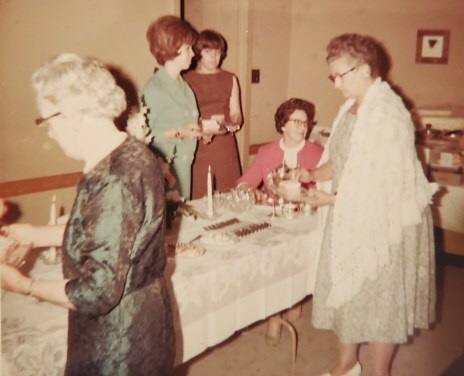 This photo shows Grandma Leora Wilson, Guy’s cousin LaVonne (Kidney) Farner (Aunt Vesta’s oldest daughter), unknown girl, Mom serving coffee, Grandma Ruby Neal. May 1966, Ralston, Iowa
This photo shows Grandma Leora Wilson, Guy’s cousin LaVonne (Kidney) Farner (Aunt Vesta’s oldest daughter), unknown girl, Mom serving coffee, Grandma Ruby Neal. May 1966, Ralston, Iowa
May 20, 2022
Tiny Tintypes
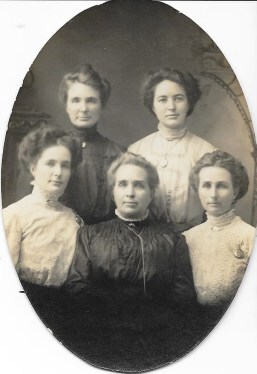 Emelia (Moore) Jordan (center) with daughters (L-R) Lottie Anderson, Laura Goff, Cora Parrish, Floy Cowden
Emelia (Moore) Jordan (center) with daughters (L-R) Lottie Anderson, Laura Goff, Cora Parrish, Floy CowdenMom asked me whether I’d noticed how much older Laura Goff was than her sisters. Well no, they all looked “old” to me.
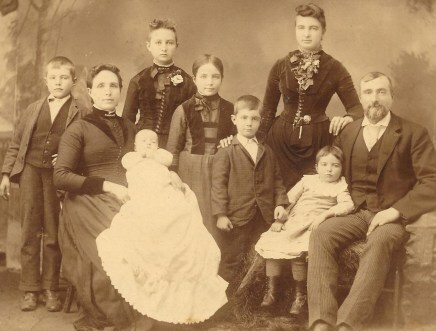 David Jordan family, late 1889 or early 1890, Guthrie County, Iowa. From left: Floyd Roy Jordan, Emeila Ann (Moore) Jordan, Frederick David Jordan, Floy Temperance Jordan, Lottie Belle Jordan, Collis Moore Jordan, Laura Arminta Jordan, Cora Nell Jordan, David Jordan.
David Jordan family, late 1889 or early 1890, Guthrie County, Iowa. From left: Floyd Roy Jordan, Emeila Ann (Moore) Jordan, Frederick David Jordan, Floy Temperance Jordan, Lottie Belle Jordan, Collis Moore Jordan, Laura Arminta Jordan, Cora Nell Jordan, David Jordan.It’s actually more obvious in this family photo, with Floy, Lottie, and Laura in the center back, with youngest sister Cora leaning against their father. Laura married in early 1890 and became a mother late that year.
Laura was born in 1868, then three children who didn’t live very long: Phoebe Caroline “Cally” (1870), Riley Ephraim (1872), and Rose Emma Jane (1874). Those three died in late 1873 to spring of 1875, and are buried in the old cemetery at Monteith, in Guthrie County, Iowa.
Recently I found a small envelope of tintypes. I’m so thankful I had kept them. I’m sure that two of them are of my great grandmother, Laura (Jordan) Goff as a girl and one is the wedding picture of her parents (another one like it was labeled).
But there are three tintypes of babies, two of them labeled. I’m sure that the unmarked one is of one of the three Jordan children who were lost long ago.
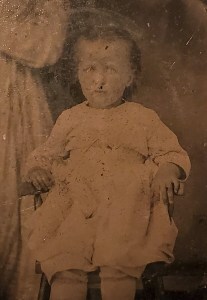 (BTB) Phoebe Caroline “Cally” Jordan (Jan. 8, 1870-May 27, 1875), buried at Monteith, Iowa
(BTB) Phoebe Caroline “Cally” Jordan (Jan. 8, 1870-May 27, 1875), buried at Monteith, Iowa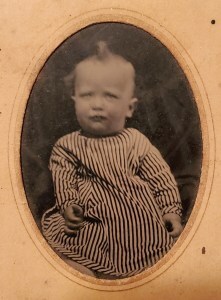 Riley Ephraim Jordan (Feb. 14, 1872-Dec. 27, 1873), buried Monteith
Riley Ephraim Jordan (Feb. 14, 1872-Dec. 27, 1873), buried Monteith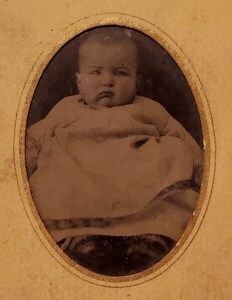 Rose Emma Jane Jordan (Apr. 26, 1874-Apr. 11, 1875), buried Monteith
Rose Emma Jane Jordan (Apr. 26, 1874-Apr. 11, 1875), buried MonteithI’ve seen the gravestones for these little ones when searching for ancestors in the cemetery at Monteith.
When I was a girl, Great Grandmother Laura Goff lived with her daughter, Grandma Leora (Goff) Wilson at Guthrie Center. Neither drove, so I remember Mom taking them to Casey, a town in southern Guthrie County, to see their sister and aunt, Cora (Jordan) Cowden. My sis Gloria and I were along that day, but it was pretty boring to us to listen to old ladies talking. Oh, I wish I’d paid attention, maybe even asked questions!
The youngest Jordan, Frederick David, was born a year before his oldest sister, Laura Goff, became a mother, when Leora Goff was born. When Fred Jordan grew up, he married Rectha Wilson in 1909. When Leora grew up, she met Clabe Wilson at Fred and Rectha’s house in Monteith. Leora and Clabe were married in 1914.
For those of you who’ve read Leora’s Dexter Stories: The Scarcity Years of the Great Depression, the youngest Jordan sister was the Cora Parrish who hired Doris Wilson in their Guthrie Center restaurant. Yes, that one who wondered how Leora had raised a daughter who didn’t know how to cut up a chicken!
8th Grade Graduation
Dexter’s eighth grade graduation of 1958 was held in the 1916 Dexter Community Building. I wasn’t aware of the history all around me. The building itself is on the National Register of Historic Places.
Both of my parents played basketball there, as well as graduated from Dexter High School. So did most of their siblings.
I had no idea until the building’s centennial celebration that Dad’s grandfather, O.S. Neal, was on the committee that planned the permanent Community Building to replace a temporary tabernacle. Dad’s mother, Ruby Blohm, graduated from Dexter in 1916, but the new building hadn’t been completed yet.
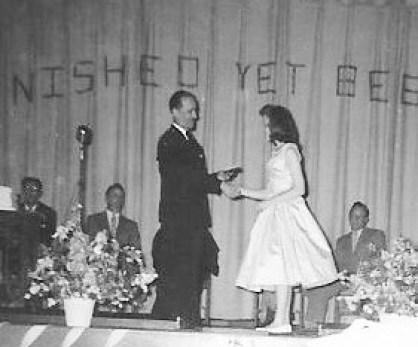 Seated on the stage are Superintendent L.O. Wineingar, Principal A. E. Ellingson, and an unidentified gentleman.
Seated on the stage are Superintendent L.O. Wineingar, Principal A. E. Ellingson, and an unidentified gentleman.Dr. Keith M. Chapler, probably school board president, hands me my 8th grade diploma. He was the doctor who had delivered me almost 14 years earlier, along with my sister and most of my cousins.
He’d also patched up Buck and Blanche Barrow after the 1933 shootout with the Barrow Gang (aka Bonnie and Clyde) in Dexfield Park!
Dr. Chapler’s wife, Eleanor, was my piano and organ teacher for years.
Mom made my dress of light blue cotton sateen, with piping and a black velvet ribbon, which tied in the back, threaded through decorative lace. (I still have the dress.)
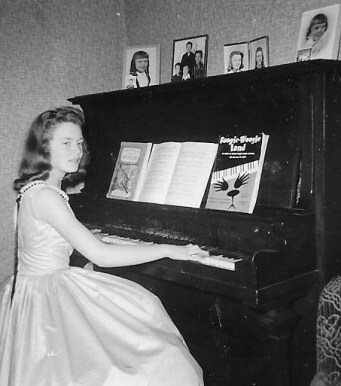 You can see the back of the dress in this photo.
You can see the back of the dress in this photo.I’ve been thinking about Grandma Leora Wilson, who wanted to go on to high school but her father forbade it. Dad’s mother, Ruby Blohm Neal, is my only grandparent who completed high school, at Dexter. Both of my parents did, in 1935 and 1936, also at Dexter.
School reorganization in 1958 meant that all four of my high school years were spent at neighboring Earlham, which was Dexter’s long-time football rival!
May 18, 2022
Soapstone Bed Warmer
My husband Guy’s mother, Carol (Walker) Herman, gave us an old soapstone bed warmer with a note that she and her siblings used it while growing up from about 1910-1930 near Glidden, Iowa.

She said that it was heated on a potbellied parlor stove and wrapped in newspapers and carried to bed.
Soapstone warmers were popular in the mid-1800s and were also used to warm feet for those who rode in a sleigh or buggy during the winter.
What is soapstone? In its purest form, it is talc, the same stone used to make baby powder. Talc gives the stone the characteristic greasy feel for which it is named. Based on the percentage of talc in the stone it could be used for a variety of things.
Its heat conductivity made it popular. The stone is so dense that it retains and radiates heat. Unlike most metals, soapstone releases heat very slowly. Soapstone, with its density, can also be reheated over and over without cracking like other metals.
 This heavy old thing is a soapstone bedwarmer.
This heavy old thing is a soapstone bedwarmer.Guy’s mother still lives on the family farm. She’ll be 99 in September!




